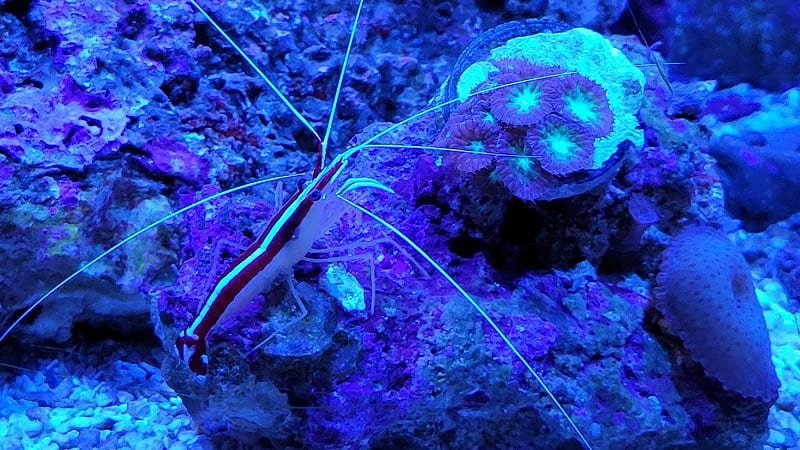Cleaner shrimp are fascinating creatures that not only enhance the beauty of your aquarium but also provide valuable services. These tiny yet mighty invertebrates play a crucial role in maintaining a healthy and balanced aquatic environment. In this complete guide, we will explore all aspects of cleaner shrimp care, including their habitat, feeding, tank mates, and general maintenance. Whether you’re a beginner or an experienced aquarist, this comprehensive guide will help you provide the best care for your cleaner shrimp.
Habitat and Aquarium Setup
Creating an ideal habitat for your cleaner shrimp is essential for their well-being. Consider the following factors:
Tank Size: Cleaner shrimp typically require a minimum tank size of 20 gallons (75 liters) to ensure adequate space for their natural behavior and interactions with other tank mates.
Water Parameters: Maintain stable water parameters within the range of 72-78°F (22-26°C) for temperature and a pH level of 8.1-8.4. Regular water testing and appropriate filtration are crucial for their health.
Substrate and Decorations: Provide a substrate suitable for their natural behavior, such as fine sand or crushed coral. Incorporate rockwork, caves, or crevices to create hiding spots and territories for the shrimp.
Feeding and Diet: Proper nutrition is vital for the well-being of cleaner shrimp. Follow these guidelines for feeding:
Natural Food Sources: In a well-established aquarium, cleaner shrimp will scavenge and feed on detritus, algae, and leftover fish food. Allow them to forage naturally, as it helps fulfill their nutritional needs.
Supplementary Foods: Supplement their diet with high-quality shrimp pellets, frozen or live brine shrimp, mysis shrimp, or finely chopped seafood. These foods provide additional nutrition and variety.
Feeding Frequency: Feed cleaner shrimp small amounts of food 2-3 times per week. Avoid overfeeding to maintain water quality and prevent excess waste accumulation.
Tank Mates and Compatibility: Cleaner shrimp are generally peaceful creatures, but proper consideration should be given when selecting tank mates:
Peaceful Species: Cleaner shrimp can coexist harmoniously with a wide range of fish, corals, and other invertebrates. They rarely exhibit aggressive behavior.
Caution with Predators: Avoid housing cleaner shrimp with aggressive or predatory fish that may view them as prey. Certain species, such as triggers or large predatory fish, should be avoided.
Reef Tank Compatibility: Cleaner shrimp are generally reef-safe and can be kept with corals and other delicate invertebrates. However, exercise caution if keeping them with particularly sensitive or sessile species.
General Maintenance: Regular tank maintenance ensures the well-being of cleaner shrimp and the overall health of your aquarium:
Water Changes: Perform routine water changes to maintain optimal water quality. Aim for a 10-20% water change every 1-2 weeks, depending on the needs of your specific aquarium.
Cleaning Substrate and Rocks: Regularly clean the substrate and rocks to remove excess detritus and waste buildup. This helps maintain water quality and reduces the risk of harmful pollutants.
Conclusion: Cleaner shrimp care requires attention to their habitat, feeding, tank mates, and general maintenance. By providing an appropriate environment, offering a varied diet, selecting compatible tank mates, and maintaining water quality, you can ensure the well-being of your cleaner shrimp. These remarkable creatures not only add beauty to your aquarium but also contribute to its balance and health. With the information provided in this complete guide, you are equipped to give your cleaner shrimp the best care possible.


